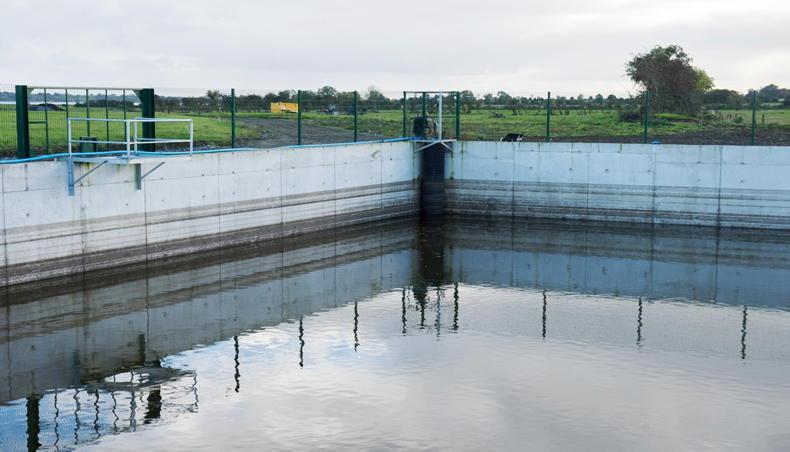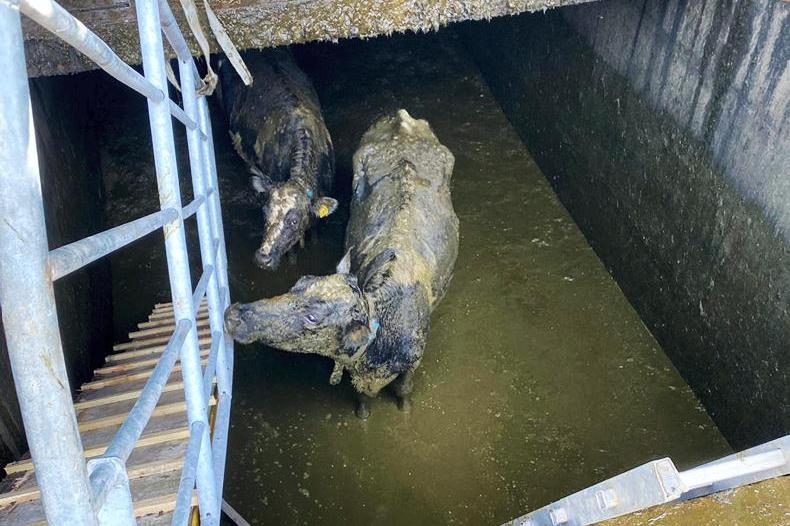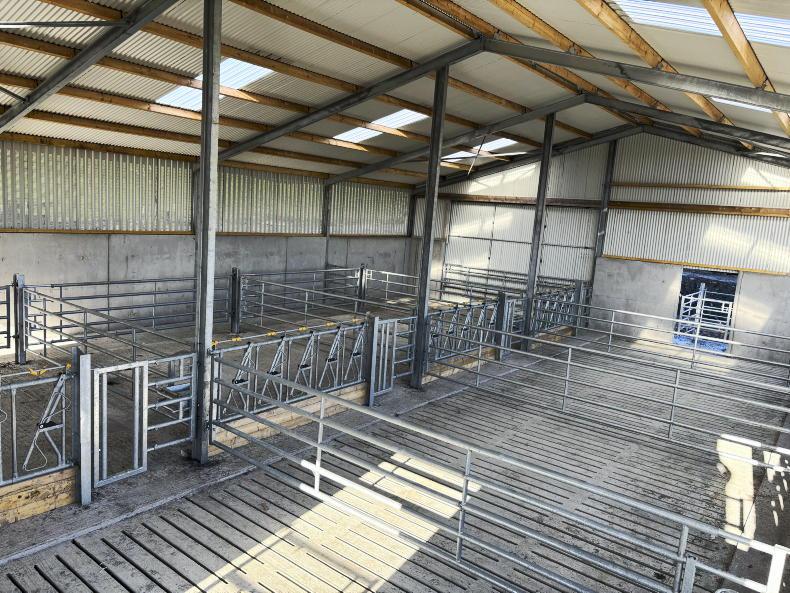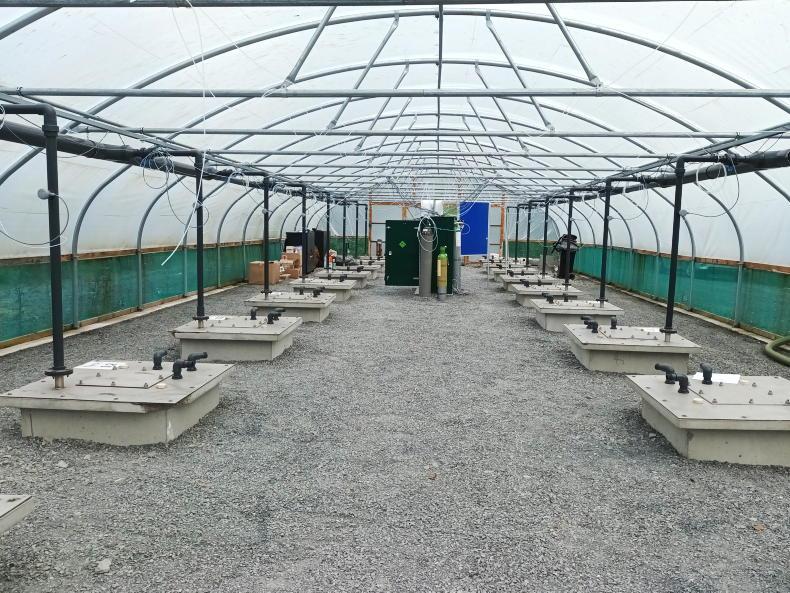Farms that are dealing with soiled water – mainly dairy farms, but also those associated with root vegetables – will have to significantly increase soiled water storage.
As part of the new nitrates programme, the spreading of soiled water will be prohibited for all milk producers.
This will occur from the following dates:
Between 10 and 31 December 2023 (three weeks).Between 1 and 31 December 2024, with exception of winter/liquid milk producers.Between 1 and 31 December 2025 onwards for winter/liquid milk producers.This means that all holdings producing soiled water must have a minimum of 31 days’ storage from 1 December 2024, with the exception of winter milk producers where storage must be in place by 1 December 2025.
Where farms do not have separate soiled water storage and washings are mixed with slurry, this will be classified as ‘slurry’.
The restricted period for spreading will happen from 1 October through to the designated opening date for your county in January.
What to do next?
The first step is to calculate your storage requirement. The most accurate way to do this would be to use a flow meter on the parlour and wash down hoses.
However, Teagasc currently recommends farmers not using a flow metre to calculate their soiled water requirements by allocating 30l of washings/cow/day. Their recommendation is to have sufficient storage for six weeks, should legislation change further down the line.
Your typical 100-cow herd will require 126,000 litres of storage for a six-week period, equating to 27,716 gallons. To put this into a tank size using a 14ft 6in (4.4m) slat, the tank should be 2.4m deep (200mm of freeboard when tank is roofed) and 14m (45ft) in length, the rough equivalent of a three-bay tank.
Where the tank is left uncovered or unroofed, freeboard will have to be increased to 300mm and the equivalent rainfall for your county for the closed period will have to be subtracted from the capacity.
Options
The simplest and most cost-effective option for most is to construct a mass concrete tank. The above tank size has a TAMS III reference cost of €15,534.06 including VAT. To include new slats over this would add another €4,206.72, including VAT.
If a farmer was to receive grant aid for the above at a 40% grant rate, they would still have to spend €11,844 of their own money.
However, in my experience of reference costs, there’s a disparity of roughly 20% between actual and real costs, with the on-ground costs being higher. Therefore, the cost to farmers is likely to be closer to €15,792, with VAT.
The above, however, does not take into account the roofing of this area for preventing rainfall entering the tank, so either the farmer will have to increase the tank size, or bear the brunt and roof over the area, which can also be grant-aided.
A second option is to split an existing tank. I recently saw a farmer split a tank; one part for soiled water and another for slurry storage.
This could be completed in a new tank relatively simply, but could also be done in an existing tank, by lifting slats and pouring a concrete wall in the existing tank to create a separate soiled water tank.
If farmers were to do this, the area must not be used as a feed area and access to it by livestock must be restricted.
Time is of the essence
The TAMS III deadline has been extended to 30 June 2023. Farmers who have planning permission in place and have or are going to apply to the first tranche will likely see approval come through from the latter days in September, meaning they should have sufficient storage created for this year.
For those with no planning in place who wish to avail of TAMS aid to construct soiled water storage, you need to act now to ensure you have it in time for Tranche 2.
Wait times for planning approval are typically eight weeks, with TAMS approval taking 12 weeks, going by previous schemes. With Tranche 2 likely to close at the end of September, it’s unlikely you will receive grant approval before Christmas 2023.
Farms that are dealing with soiled water – mainly dairy farms, but also those associated with root vegetables – will have to significantly increase soiled water storage.
As part of the new nitrates programme, the spreading of soiled water will be prohibited for all milk producers.
This will occur from the following dates:
Between 10 and 31 December 2023 (three weeks).Between 1 and 31 December 2024, with exception of winter/liquid milk producers.Between 1 and 31 December 2025 onwards for winter/liquid milk producers.This means that all holdings producing soiled water must have a minimum of 31 days’ storage from 1 December 2024, with the exception of winter milk producers where storage must be in place by 1 December 2025.
Where farms do not have separate soiled water storage and washings are mixed with slurry, this will be classified as ‘slurry’.
The restricted period for spreading will happen from 1 October through to the designated opening date for your county in January.
What to do next?
The first step is to calculate your storage requirement. The most accurate way to do this would be to use a flow meter on the parlour and wash down hoses.
However, Teagasc currently recommends farmers not using a flow metre to calculate their soiled water requirements by allocating 30l of washings/cow/day. Their recommendation is to have sufficient storage for six weeks, should legislation change further down the line.
Your typical 100-cow herd will require 126,000 litres of storage for a six-week period, equating to 27,716 gallons. To put this into a tank size using a 14ft 6in (4.4m) slat, the tank should be 2.4m deep (200mm of freeboard when tank is roofed) and 14m (45ft) in length, the rough equivalent of a three-bay tank.
Where the tank is left uncovered or unroofed, freeboard will have to be increased to 300mm and the equivalent rainfall for your county for the closed period will have to be subtracted from the capacity.
Options
The simplest and most cost-effective option for most is to construct a mass concrete tank. The above tank size has a TAMS III reference cost of €15,534.06 including VAT. To include new slats over this would add another €4,206.72, including VAT.
If a farmer was to receive grant aid for the above at a 40% grant rate, they would still have to spend €11,844 of their own money.
However, in my experience of reference costs, there’s a disparity of roughly 20% between actual and real costs, with the on-ground costs being higher. Therefore, the cost to farmers is likely to be closer to €15,792, with VAT.
The above, however, does not take into account the roofing of this area for preventing rainfall entering the tank, so either the farmer will have to increase the tank size, or bear the brunt and roof over the area, which can also be grant-aided.
A second option is to split an existing tank. I recently saw a farmer split a tank; one part for soiled water and another for slurry storage.
This could be completed in a new tank relatively simply, but could also be done in an existing tank, by lifting slats and pouring a concrete wall in the existing tank to create a separate soiled water tank.
If farmers were to do this, the area must not be used as a feed area and access to it by livestock must be restricted.
Time is of the essence
The TAMS III deadline has been extended to 30 June 2023. Farmers who have planning permission in place and have or are going to apply to the first tranche will likely see approval come through from the latter days in September, meaning they should have sufficient storage created for this year.
For those with no planning in place who wish to avail of TAMS aid to construct soiled water storage, you need to act now to ensure you have it in time for Tranche 2.
Wait times for planning approval are typically eight weeks, with TAMS approval taking 12 weeks, going by previous schemes. With Tranche 2 likely to close at the end of September, it’s unlikely you will receive grant approval before Christmas 2023.










SHARING OPTIONS